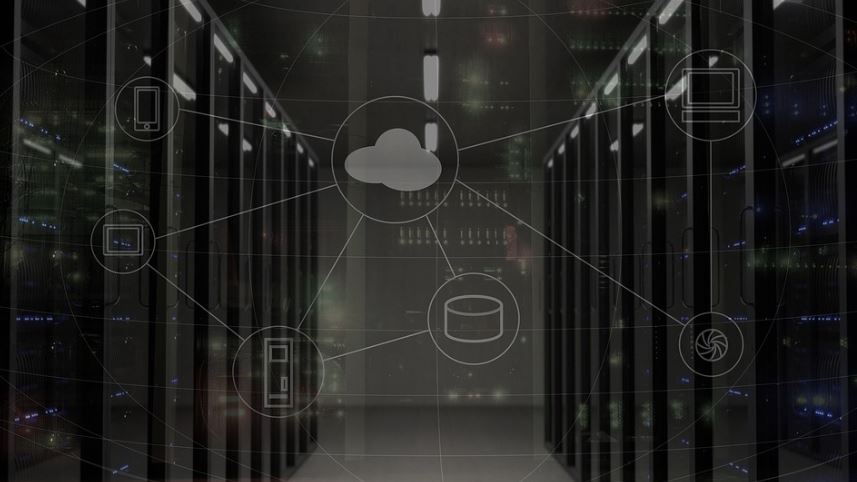How Does Pinterest Use Cloud Computing? in this age, most internet-depended companies use cloud computing to keep costs down and allow for flexible scaling.
Cloud computing allows Pinterest to store and access data over the Internet instead of on physical servers. This means that Pinterest can add or remove capacity as needed without having to invest in new hardware.
The company uses cloud computing to store and manage user data. Pinterest has been using Amazon Web Services (AWS) since its inception in 2010.
In 2012, the company switched to using Google App Engine (GAE). GAE provides Pinterest with a scalable infrastructure that can handle large amounts of traffic.
Pinterest Uses AWS to Help 200 Million Users Discover New Ideas
Is Pinterest a Cloud Computing?
No, Pinterest is not a cloud computing company. Cloud computing is a type of internet-based computing that provides shared computer processing resources and data to computers and other devices on demand.
It is a model for enabling ubiquitous, convenient, on-demand network access to a shared pool of configurable computing resources (e.g., networks, servers, storage, applications, and services).
What Cloud Service Does Pinterest Use?
Pinterest is a social media platform that allows users to share images and videos. It is also a web-based service that provides users with storage, analysis, and marketing tools. Cloud services are integral to the functioning of Pinterest.
The website uses Amazon Simple Storage Service (S3) for storing data and Microsoft Azure for powering its search engine.

Aws
AWS is a cloud computing platform that offers on-demand access to a variety of services including storage, computing power, and software applications.
These services are delivered over the internet, making it easy for businesses to scale their operations and reduce their IT costs.
Where is Pinterest Data Stored?
As one of the largest social media platforms in the world, Pinterest stores a lot of data. This data includes everything from user information to pins and boards. So where is all this data stored?
Pinterest has multiple data centers around the world that store all of its users’ data. The company has facilities in the United States, Europe, and Asia.
Each data center is designed to be highly secure and scalable so that it can handle the large amount of traffic and data that Pinterest processes every day.
User information such as names, emails, and passwords are stored on servers that are encrypted with industry-standard security protocols.
This ensures that only authorized personnel can access this sensitive information. Pins and boards are also stored on servers, but they are not encrypted since they are public information.
However, these servers are still protected by security measures to prevent unauthorized access. Overall, Pinterest takes data security very seriously and has implemented multiple layers of protection to keep users’ information safe.
Pinterest Fgac
Pinterest is a great way to stay organized and save time. But what exactly is it? And how can you make the most out of using Pinterest?
In short, Pinterest is a virtual pinboard. You can use it to organize and share anything you find online—including articles, recipes, photos, and more. Plus, you can follow other people’s boards to get new ideas and inspiration.
If you’re new to Pinterest, here are some tips to help you get started: 1. Create an account. You’ll need an email address to sign up for Pinterest.
Once you’re signed up, you can start creating your own boards or following others’ boards. 2. Find things to pin. When you come across something online that you like, click the “Pin It” button to add it to one of your boards.
You can also repin things that others have pinned—just hover over an image and click the “Repin” button. 3. Organize your pins into boards. To keep things organized, create different boards for different topics (e.g., recipes, travel destinations).
That way, when you want to find something specific, it’ll be easier to locate it on the right board.
Amazon And Pinterest
As two of the most popular e-commerce platforms, Amazon and Pinterest are often compared. Both platforms offer users a way to buy and sell products, but there are some key differences between the two.
For one, Amazon is primarily a marketplace for physical goods, while Pinterest is geared more toward digital products and services.
This means that if you’re looking to sell something on either platform, you’ll need to consider which one is more likely to generate interest from buyers.
Another difference is that Amazon offers a much wider range of products than Pinterest. This can be both good and bad depending on what you’re selling; on one hand, it gives you more exposure to potential customers, but on the other hand, it can be harder to stand out from the crowd.
Finally, Amazon is generally considered to be more user-friendly than Pinterest when it comes to buying and selling products.
This means that if you’re new to e-commerce or don’t have a lot of experience with online shopping, Amazon may be a better option for you.
My Final Words:
Those who use Pinterest as their marketing or personal purpose may ask the question, How Does Pinterest Use Cloud Computing?
The company relies heavily on cloud computing to keep its website running smoothly and efficiently. Pinterest uses Amazon Web Services (AWS) to store and manage all of the data associated with its user accounts.
This includes everything from user profiles and preferences to the actual images that are shared on the site. In addition, Pinterest makes use of Amazon’s Elastic Load Balancing service to distribute traffic across its servers during peak periods. By using AWS, Pinterest has been able to scale its operations quickly and without any major issues.